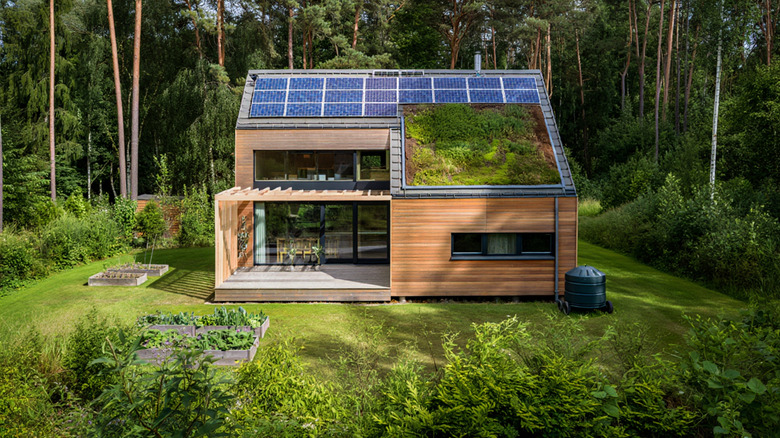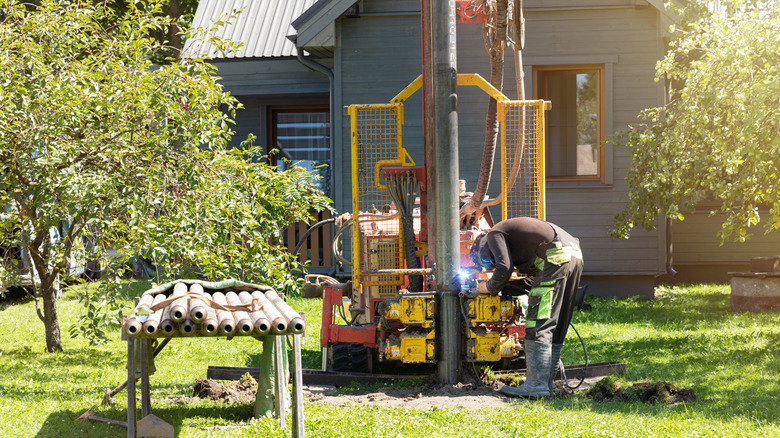The Unexpected Costs Of Living In An Off-Grid Home
In 2020, there was a spike in searches for off-grid homes and a general trend of moving to rural areas. Rural housing applications spiked by 80% during the pandemic, according to Fannie Mae. Overall, there was a push for off-grid living and homesteading. The challenge was that many moving to those locations came from urban areas, driven by pressure to escape civil unrest, lockdowns, and rising city costs. Add in the popularity of TV shows like "Alaska: The Last Frontier," "Alaskan Bush People," and "Mountain Men," and it's no wonder the lifestyle looked appealing.
The problem is much of the content glamorizing off-grid living isn't reality. Some who moved off-grid in the early 2020s discovered the truth a little too late. Living in an off-grid home comes with unexpected expenses and challenges — from installing a solar power system with the right capacity, to fuel costs for travel, digging a well, or purchasing equipment.
So, what is "off-grid"? People may define it differently based on their dreams of a self-sufficient life, but simply put, it means living in a home on a property completely disconnected from public utilities — fully self-sustainable. If you've never lived this way, you may be in for a rude awakening. Just imagine your life without easy access to power, water, heat, or food. Bills you pay now are essentially for convenience. When a storm takes out the power lines, someone else fixes it. If your water line breaks, you call a plumber. Your furnace goes out during a snowstorm? A repairman comes. Off-grid, those problems fall squarely on you. That's not to say it isn't rewarding. If it's your dream, it's worth preparing for the costs and challenges.
Prepare for the unexpected costs of living in an off-grid home
Living in an off-grid home can be a rewarding and empowering lifestyle. But there are expectations and there's reality, and the closer you can get those two to align, the happier you'll be. The biggest shock for those new to off-grid living is the price tag. Take solar power, for example. Many newcomers think they'll save money by piecing together a system they saw on YouTube — but you should really reconsider DIYing your solar panel installation. While solar DIY kits might seem worth it, they often end up being a waste of your money once you factor in mistakes, capacity issues, and replacement costs. A professional system may cost more upfront, but it usually saves you in the long run.
Basic needs like food and water bring more surprises. Drilling a well can run into the tens of thousands, and hauling water gets old fast. Self-sufficient gardening, such as growing your own food, also comes with challenges and learning how to get started takes time. There's the expense of fencing, soil, and seeds.
Other hidden expenses include fuel for generators, replacing batteries, and maintaining equipment. In some areas, HOA-style agreements even require you to help maintain rural roads. Transportation is another major cost — hauling in food, household goods, or heavy equipment to a remote property often becomes one of the biggest ongoing expenses. The point isn't to discourage you — it's to prepare you. Knowing the true cost of off-grid life helps you plan realistically and enjoy the freedom it offers.

